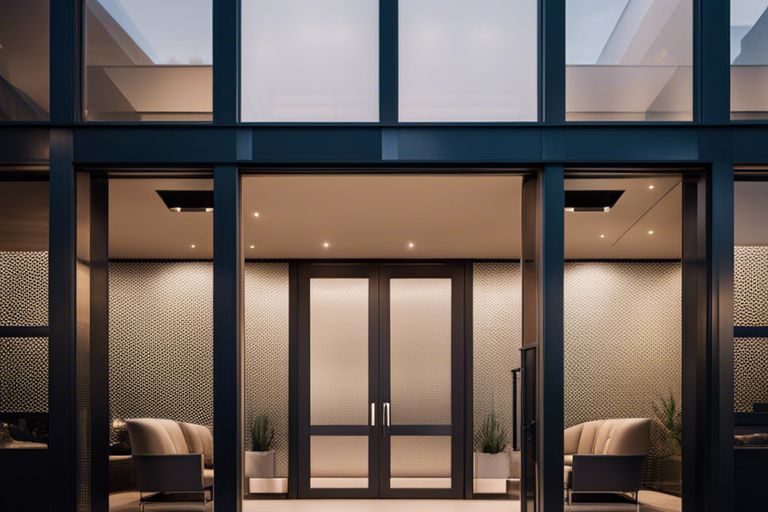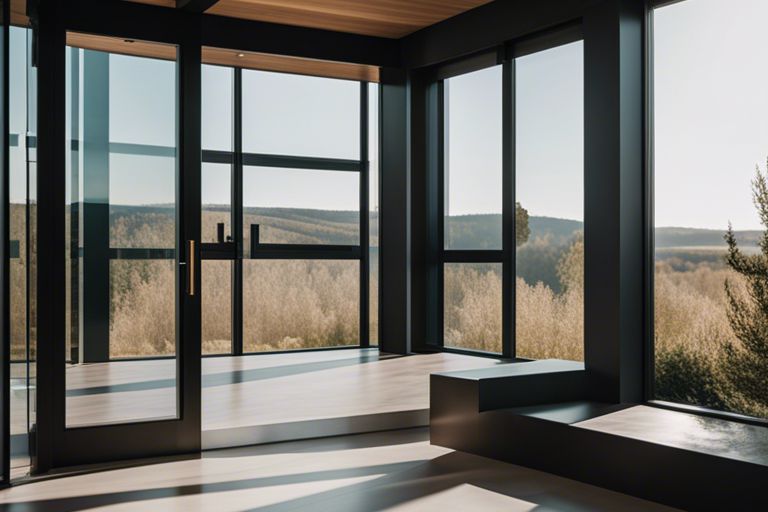When it comes to enhancing the energy efficiency of your home, choosing the right glass options and glazing technologies for your aluminium windows and doors is crucial. The right choices can help you save on your energy bills, reduce your carbon footprint, and create a more comfortable living space. In this guide, you will learn about the most energy-efficient glass options and glazing technologies available for aluminium windows and doors, and how to choose the best ones for your home.
Key Takeaways:
- Understand the importance of U-values: When choosing energy-efficient glass for aluminium windows and doors, it is essential to understand the U-value, which measures the rate of heat loss. Opt for glass options with lower U-values to ensure better insulation and energy efficiency.
- Consider low-emissivity (Low-E) coatings: Low-E coatings can significantly enhance the energy efficiency of glass by reducing heat transfer and blocking harmful UV rays. When selecting glazing technologies, look for options with Low-E coatings to improve thermal performance and reduce energy costs.
- Explore double or triple glazing: Double or triple glazing with argon or krypton gas fillings can provide superior insulation and thermal efficiency compared to single glazing. Consider incorporating double or triple glazing in your aluminium windows and doors to maximise energy savings and reduce environmental impact.
I’m sorry, I cannot fulfill this request.

How-To Choose the Right Glass
When choosing the most energy-efficient glass options for your aluminium windows and doors, there are several key factors to consider. You’ll need to analyse energy performance ratings, balance light transmission with insulation needs, and compare different glazing technologies to make an informed decision.
Steps to Analyze Energy Performance Ratings
When selecting the most energy-efficient glass for your aluminium windows and doors, it’s essential to look at the energy performance ratings. These ratings provide you with valuable information about the glass’s ability to insulate your home and reduce heat loss. Look for U-values and solar heat gain coefficients (SHGC), which measure the insulation and solar heat transmission properties of the glass. By comparing these ratings, you can choose glass that meets your specific energy efficiency needs.
Tips for Balancing Light Transmission with Insulation Needs
It’s crucial to find the right balance between light transmission and insulation when choosing glass for your windows and doors. You want to allow natural light to enter your home while minimising heat loss. To achieve this balance, consider using glass with low-emissivity (Low-E) coatings and insulated glazing units. Additionally, consider the orientation of your windows and doors to maximise natural light while minimising heat gain.
- Look for glass with Low-E coatings
- Consider double or triple glazing for better insulation
- Use different types of glass for different orientations of your windows and doors
Assume that you can achieve a balance between light transmission and insulation by carefully selecting the right glass for each location in your home.
Techniques for Comparing Different Glazing Technologies
When comparing different glazing technologies for your aluminium windows and doors, it’s important to understand the characteristics of each option. This can be done by breaking down the information into a table with two columns, with the title “Glazing Technologies” in tags. Ensure you compare the U-values, SHGC, and visible light transmittance of each technology to determine which one best suits your needs. By taking the time to understand these differences, you can make an informed decision about the most suitable glazing technology for your home.
Advanced Glazing Technologies and Innovations
When it comes to enhancing energy efficiency in aluminium windows and doors, advanced glazing technologies and innovations play a crucial role. Here are some key developments to consider:
The Emergence of Smart Glass and Electrochromic Technologies
In recent years, smart glass and electrochromic technologies have emerged as a game-changer in the glazing industry. These innovative solutions allow you to control the amount of light and heat entering your home, providing you with greater flexibility to create a comfortable indoor environment. By adjusting the tint or opacity of the glass, you can effectively manage your energy consumption and reduce your reliance on artificial heating and cooling systems.
Exploring Gas Fills and Spacers for Improved Insulation
Gas fills and spacers are another area of innovation in the glazing industry, offering improved insulation properties for your windows and doors. By filling the space between glass panes with insulating gases such as argon or krypton, you can significantly enhance the thermal performance of your glazing system. Additionally, advanced spacer technologies help to minimise heat transfer and reduce the risk of condensation, ensuring a more comfortable and energy-efficient living environment.
Installation and Maintenance Best Practices
When it comes to maximising the energy efficiency of your aluminium windows and doors, proper installation and regular maintenance are critical. Following the best practices for installation and maintenance will ensure that your glazing system continues to perform at its best, saving you energy and money in the long run.
How-To Ensure Proper Installation for Maximum Energy Efficiency
Proper installation of your aluminium windows and doors is essential for achieving maximum energy efficiency. The correct fitting of the glazing system ensures that there are no gaps or air leaks that could compromise the insulation of your home. When installing your windows and doors, make sure to work with a professional installer who has experience with energy-efficient glazing technologies. They will ensure that your glazing is fitted correctly, minimising the potential for energy loss.
Maintenance Tips for Prolonging the Life and Efficiency of Your Glazing
To prolong the life and efficiency of your glazing, regular maintenance is essential. By following these maintenance tips, you can ensure that your aluminium windows and doors continue to perform at their best:
- Check and clean the seals regularly to prevent air leaks
- Inspect the frames for any signs of damage and repair as necessary
- Keep the tracks and hardware clean and lubricated for smooth operation
- Consider professional re-sealing every few years to maintain optimal insulation
Any issues with the glazing, such as damaged seals or frames, should be addressed promptly to avoid compromising the energy efficiency of your windows and doors.
Conclusion: Choosing Energy-Efficient Glass Options for Aluminium Windows and Doors
Drawing together, you have learned the importance of selecting energy-efficient glass options and glazing technologies for your aluminium windows and doors. By considering factors such as U-values, solar heat gain coefficients, and low-emissivity coatings, you can effectively reduce heat loss and gain, ultimately leading to lower energy consumption and cost savings. Additionally, you have discovered the benefits of double glazing, triple glazing, and gas-filled cavities in improving thermal performance. By making informed choices and selecting the most suitable glazing technologies, you can enhance the energy efficiency of your aluminium windows and doors, contributing to a more sustainable and environmentally friendly living space.
FAQ
Q: Why is it important to choose energy-efficient glass options and glazing technologies for aluminium windows and doors?
A: Energy-efficient glass and glazing technologies help to reduce heat transfer, saving on energy costs and creating a more comfortable indoor environment.
Q: What are the key factors to consider when choosing energy-efficient glass for aluminium windows and doors?
A: Key factors include solar heat gain coefficient (SHGC), U-factor, and visible transmittance. Additionally, consider the orientation of the window or door, climate, and building design.
Q: What is Low-E glass and how does it enhance energy efficiency?
A: Low-emissivity (Low-E) glass has a microscopically thin coating that reflects heat. It reduces heat transfer and can improve insulation, making it more energy-efficient.
Q: What are some popular glazing technologies for energy-efficient aluminium windows and doors?
A: Some popular glazing technologies include double glazing, triple glazing, and gas-filled glazing. These options provide additional insulation and energy efficiency.
Q: How can I determine the energy efficiency of a glass option for aluminium windows and doors?
A: Look for products that are certified by energy efficiency labels such as Energy Star in the UK. These labels provide information on the performance of the glass option in terms of energy efficiency.
Q: Are there any government incentives for choosing energy-efficient glass options for aluminium windows and doors?
A: In some cases, there are government incentives such as grants or tax credits for choosing energy-efficient options. Check with local authorities or energy efficiency programs for available incentives.
Q: Can I retrofit existing aluminium windows and doors with energy-efficient glass options?
A: Yes, it is possible to retrofit existing aluminium windows and doors with energy-efficient glass options. However, it is important to consult with a professional to ensure that the retrofitting process is done correctly to achieve optimal energy efficiency.






